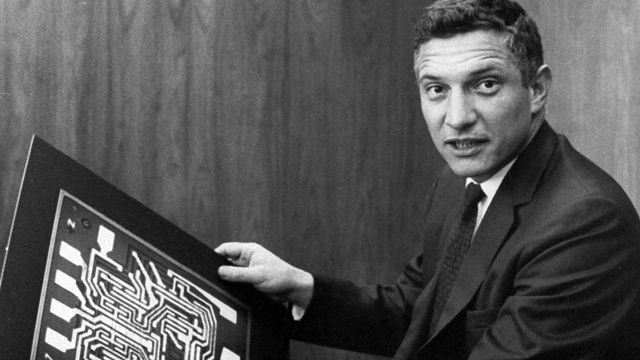Remote work had first gone mainstream during the coronavirus pandemic of 2020, but a prominent entrepreneur had predicted it four decades prior.
Intel co-founder Robert Noyce had appeared to predict the rise of remote work all the way back in 1981. This was before the advent of mainstream computers or the internet, but Noyce had foreseen a future in which people wouldn’t need to go to a physical office to do their work.

”As we look on into the future, we’re going to find that we can, in effect, put ourselves wherever we want to be without moving,” he had then said. “We can create the environment that we want around us. For instance, if I look out on the road there, we find most of the cars that are driving by are not carrying goods. They’re carrying brains, trying to take the brain to the place where the work is to be done,” he had added.
“With modern communications and the extension of what we can see in communications and in computer power, in getting information transferred back and forth, there is no reason why you could not carry on this interview at home, at your office, with me, at my office, et cetera. And I think that as we look farther into the future, we’re going to find that people will live, live where it is conducive to live, not where it is conducive to work” he had predicted. “The movement of the work to the individual will be much easier because, as I say, most of our people are doing knowledge work, not work with physical materials,” he had added.
Noyce’s prediction came true almost in its entirely. Thanks to the advent of computers — which ran primarily on Intel’s chips back then — work moved from physical desks and paper to these machines. The internet appeared in the 90s, and speeds became faster over the next couple of decades. Moore’s law — formulated by Noyce’s cofounder, Gordon Moore — meant that chips became exponentially cheaper with time, and computers ended up in every home.
The stage for set for remote work to become mainstream, but it needed a push to get companies to adopt it en-masse — the inertia of remaining in offices was too great to otherwise overcome. The push came in the form of the coronavirus pandemic in 2020, which confined people to their homes to prevent the spread of the virus. And with computers having become ubiquitous — most people had them in their homes — and fast and cheap internet speeds, people were able to work from home without ever attending office.
This technology prevented major shocks to the world economy — most knowledge work continued largely as before — and some companies decided that remote was the way to go, even after the pandemic got over. Shopify declared it was becoming permanently remote-first company, as did Quora. And while some companies have begun gradually calling employees back into offices for a few days a week as the pandemic has ebbed away, mainly to give them a chance to bond with their colleagues, Noyce’s prediction of how work would move to the home as indeed come true, four decades after he’d made it.